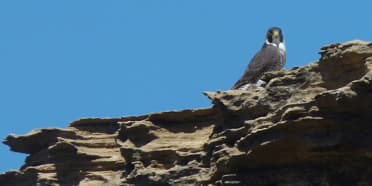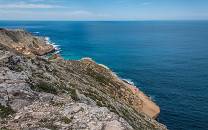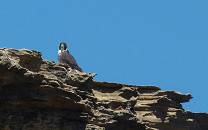- You are here:
- Home
- Countries & Parks
- Madagascar Parks
- Cap Sainte Marie Special Reserve
Overview – Cap Sainte Marie SR

Philip is a renowned Africa expert and author of many guidebooks to African destinations, including the Insight guide to Madagascar.
Philip is a renowned Africa expert and author of the Insight Guide to Madagascar.
Philip is the author of the Insight Guide to Madagascar.
Cap Sainte Marie Special Reserve (Réserve Spéciale du Cap Sainte-Marie) is the southernmost point of Madagascar. Known locally as Cap Vohimena, this windswept headland is covered in a unique dwarf variety of dry spiny forest. A lighthouse stands out in the stark surroundings. It is also a good place to look for eggshell fragments from the extinct elephant bird. Two short circular hikes through the small but scenic reserve can be covered in a half-day visit.


Pros & Cons
- Most southern point of Madagascar
- Unique coastal spiny forest
- Thousands of tortoises
- Easy hiking trails
- Small reserve
- Not much wildlife
- No accommodations in the reserve
Cap Sainte Marie SR Safari Reviews
- Expert Rating
- Wildlife
- Scenery
- Bush Vibe
- Birding
- User Rating 0.0/5– 0 Reviews
- Wildlife
- Scenery
- Bush Vibe
- Birding
Wildlife
The reserve is a stronghold for two critically endangered tortoises that are otherwise only likely to be seen in captivity. The radiated tortoise, which can live for more than 150 years and weighs up to 8kg/18lb, is more often encountered than the smaller spider tortoise. Another reptile that thrives here is the fascinating three-eyed lizard. Big numbers of humpback whales with their young pass the reserve between August and November.
Scenery
The reserve is marked by its rugged coastline. On top of the cliffs stands a lighthouse, surrounded by a stark, windswept terrain. The vegetation consists of a dwarf version of spiny forest and much of the flora is unique to Cap Sainte Marie. Below the cliffs are several caves and long white beaches.
Activities
The two circular walking trails that run through the small reserve offer some great views over the cliffs to the beaches and ocean below. Connected by a 5km/3mi drive, both trails can be covered comfortably in a half-day visit. Look out for radiated tortoises, as well as eggshell fragments from the elephant bird, which was double the weight of an ostrich and became extinct 1,000 years ago. A variety of marine birds and (seasonally) humpback whales might be seen from the cliffs.
Weather & Climate
Cap Sainte Marie has a warm semi-arid climate. It doesn’t rain very often, but most precipitation falls from December to February. The exposed coastal headland location makes for windy conditions. The average daytime temperature is 28°C/82°F, but the sea breeze makes the heat quite bearable. Nighttime is considerably cooler, with temperatures around 18°C/64°F.
Best Time To Visit
Cap Sainte Marie can be visited at any time. The small reserve has a few well-maintained hiking trails and the dry terrain makes for easy hiking. August to November is a special time as this is when many humpback whales migrate along this stretch of coast.
Getting There
The reserve is really off the beaten track and a full day’s drive from Taolagnaro (Fort Dauphin), the nearest town with substantial traveler activity and a domestic airport. Madagascar Airlines has scheduled flights to this city. The distance from Faux Cap is 50km/30mi, and from the surfing beach at Lavanono it’s 30km/20mi. The villages at Faux Cap and Lavanono have some accommodations.
Health & Safety
Please read our malaria and vaccinations page for Madagascar and our general ‘Wildlife Viewing Safety Precautions’ for more info:
Want To Visit Cap Sainte Marie SR?
Cap Sainte Marie SR Safari Reviews
- Expert Rating
- Wildlife
- Scenery
- Bush Vibe
- Birding
- User Rating 0.0/5– 0 Reviews
- Wildlife
- Scenery
- Bush Vibe
- Birding
Most Helpful Expert Review

Anthony is a photographer and writer for travel magazines and Lonely Planet, including the guides to Kenya and Botswana & Namibia.
Madagascar’s Land’s End
Here on Madagascar’s southernmost tip, you’ll feel like you’ve reached one of the most remote places on Earth. It’s a long, rough, two-day drive to get here from the nearest paved road, and the security situation can be a concern....


 Madagascar Parks
Madagascar Parks
